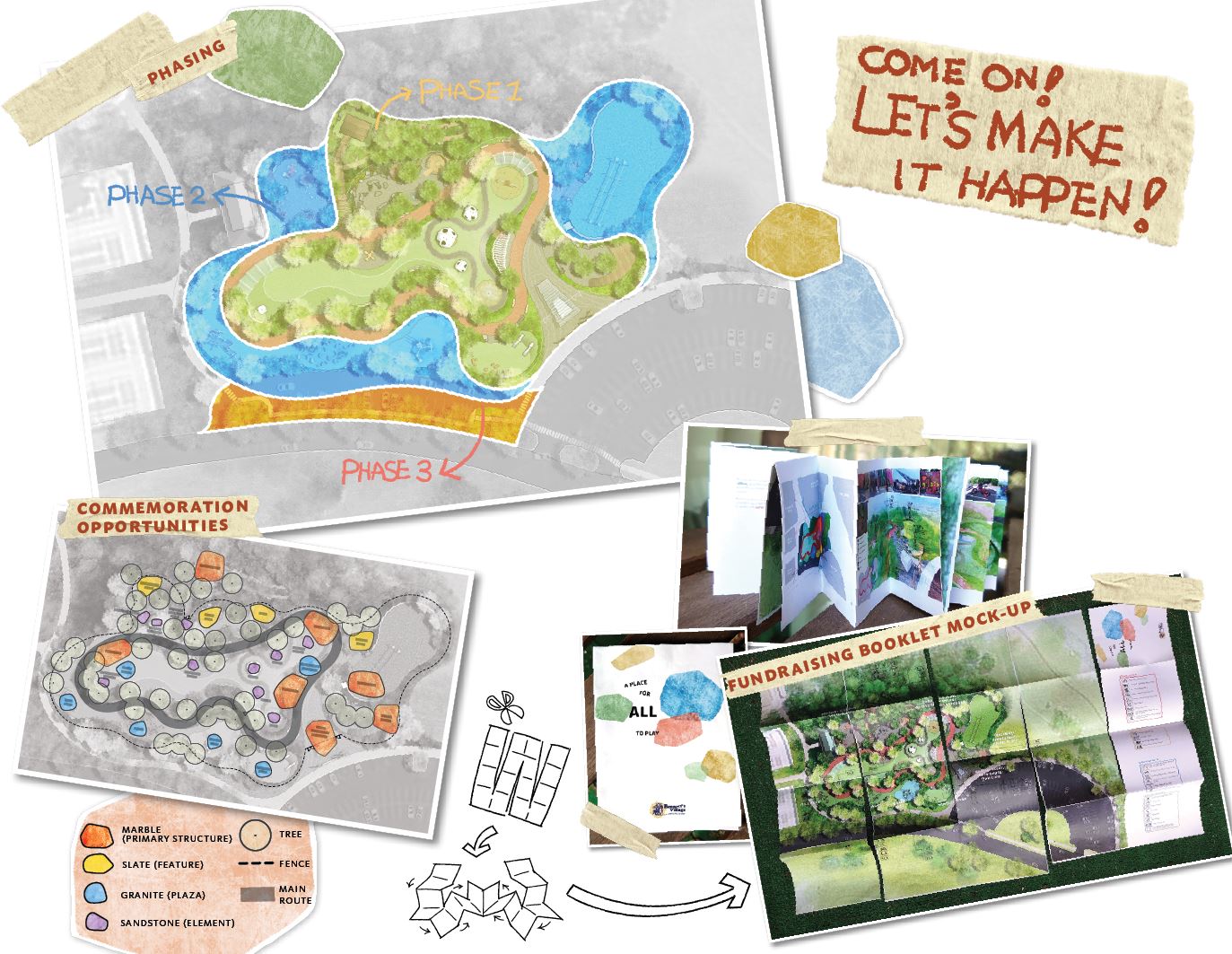People come in all shapes, sizes, and colors. Most designers embrace this formal diversity as inspiration to elevate the aesthetics and character of constructed landscapes. However, people also come with a broad range of functional abilities – physical, cognitive, and emotional. Projects like Bennett’s Village that aim to ‘make the world a more inclusive place for ALL to play’ provide opportunities for designers to explore the richness of landscape through the lens of humanity’s full range of formal AND functional diversity.
The Bennett’s Village design team embraced this opportunity working collaboratively with community stakeholders and subject matter experts to develop a park and playground design that reflects the richness of all abilities. The design deploys evidence based strategies layering sensory experiences in space and time to support inclusivity, kinship, and community. Specific design features include an ADA accessible bird’s nest, a wheelchair racing track, an eight-sense sensory garden, a hide and seek maze, and an all abilities gathering area for birthday parties and special events.
In catering to and drawing inspiration from all abilities, the park will be a place where all can come to see and be seen, providing freedom of movement and joyous moments for parents, children, and friends.
Bennett’s Village
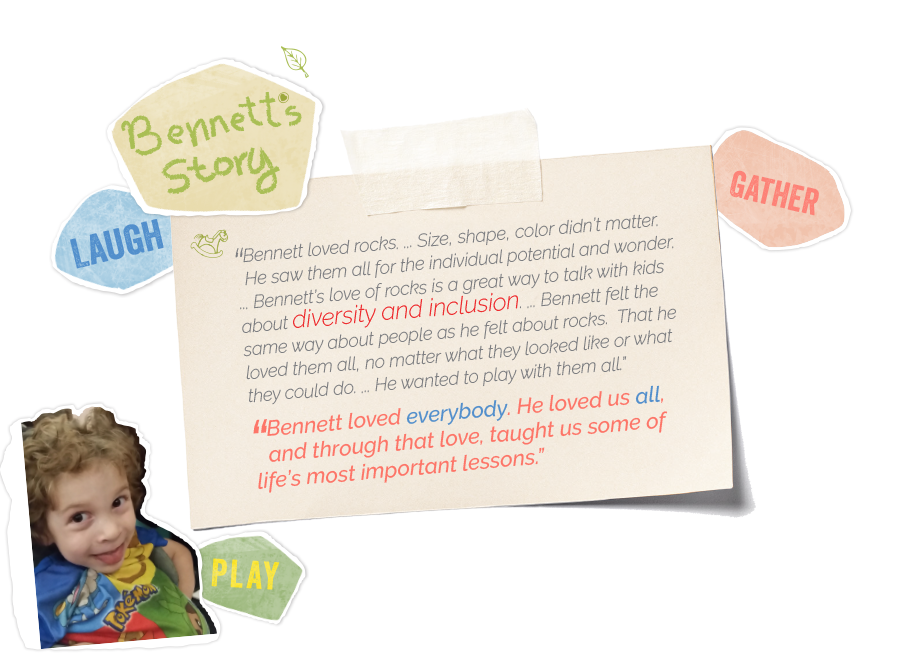
INSPIRATION | The non-profit Bennett’s Village, Inc. hired Mahan Rykiel to design the playground in memory of Five-year-old Charlottesville native Bennett Charles McClurken-Gibney who died in 2018 from Spinal Muscular Atrophy, a disorder that weakens muscle functionality.
Bennett’s story is the inspiration behind the project highlighting the links between diversity, inclusion, and access for people of all sizes, shapes, and abilities in the park.
WHO DO WE DESIGN FOR?
The design intent of the Bennett’s Village project is to build a multi-generational, all abilities playground that is fun, safe, inspiring, and beautiful, advancing community-wide understanding about inclusivity, open space, nature, and play.
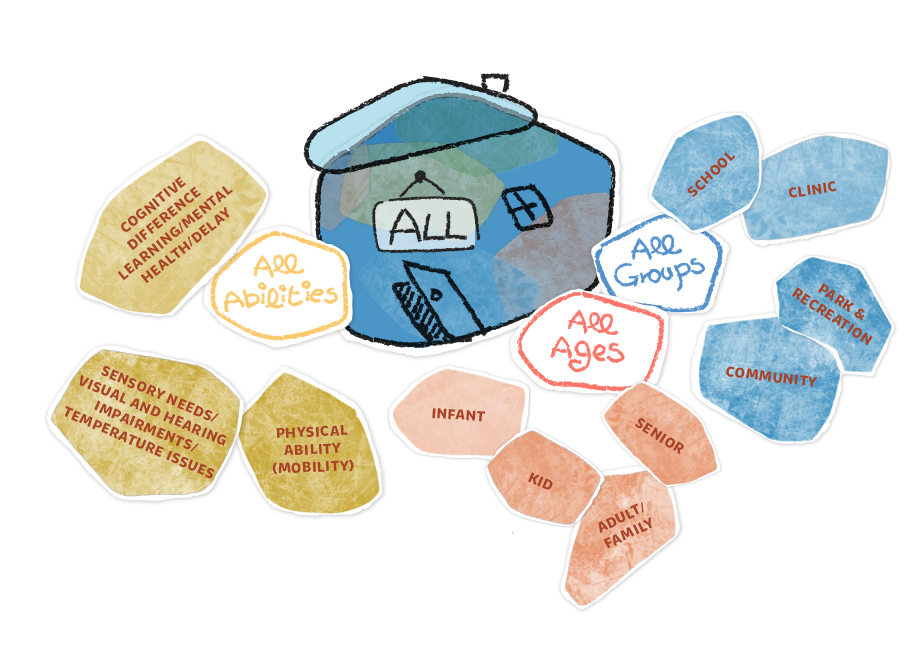
WHAT DOES EVERYONE NEED?
The Bennett’s Village design team listened and worked collaboratively with families, stakeholders and subject matter experts to develop a park and playground design that reflects the richness of all abilities.
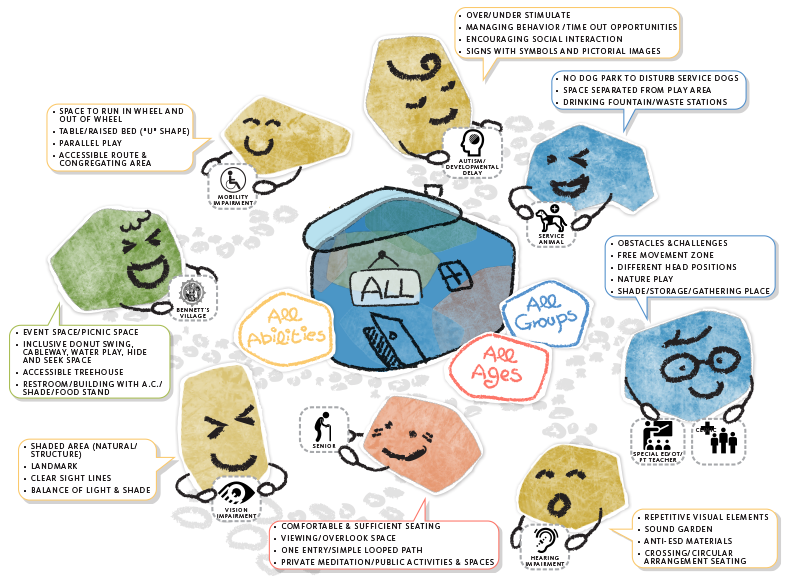
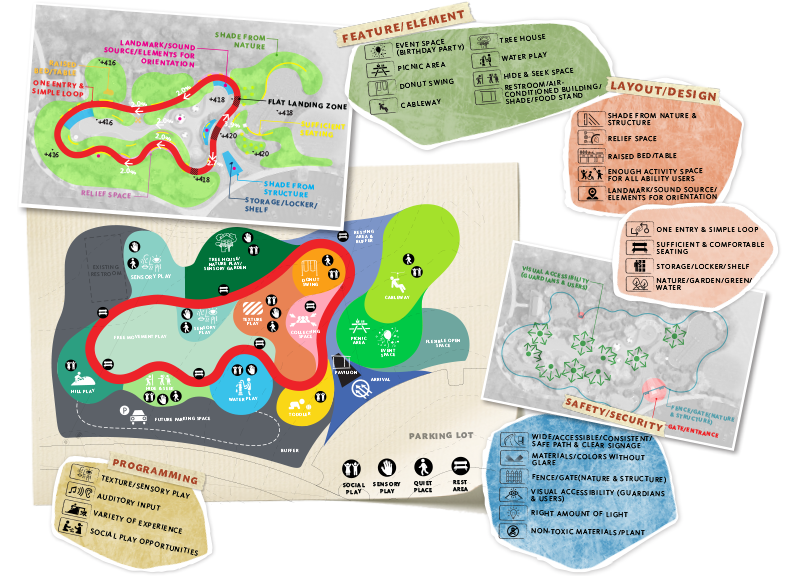
MEETING THE NEEDS
Site, scale, and material qualities were evaluated and selected to support community goals and evidence-based guidance from families and subject matter experts. Flexible programming elements are layered on the physical design framework to create a uniquely inclusive play space that will serve the community for years to come.
SITE PLAN | The playground plan presents a wide array of all abilities experiences organized around a central loop that supports safety, exploration, discovery, and community in a fun and beautiful environment, changing the perception of all abilities open space.
CENTRAL LOOP
The central loop provides an armature for the rest of the site’s experiential areas and an essential orienting function that is critical for all abilities environments. A single arrival point with carefully calibrated signage for enhanced legibility welcomes users to Bennett’s Village and let everyone understand they belong.
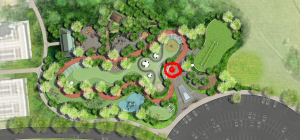
SAFE RISKS
The design enables wheelchair users to experience the exhilaration of speed and the thrill of flight. An undulating race track allows wheeled users to engage in ‘safe risks’ that promote development and provide a sense of excitement, while an all abilities ‘cableway’ offers an opportunity for all to take flight.
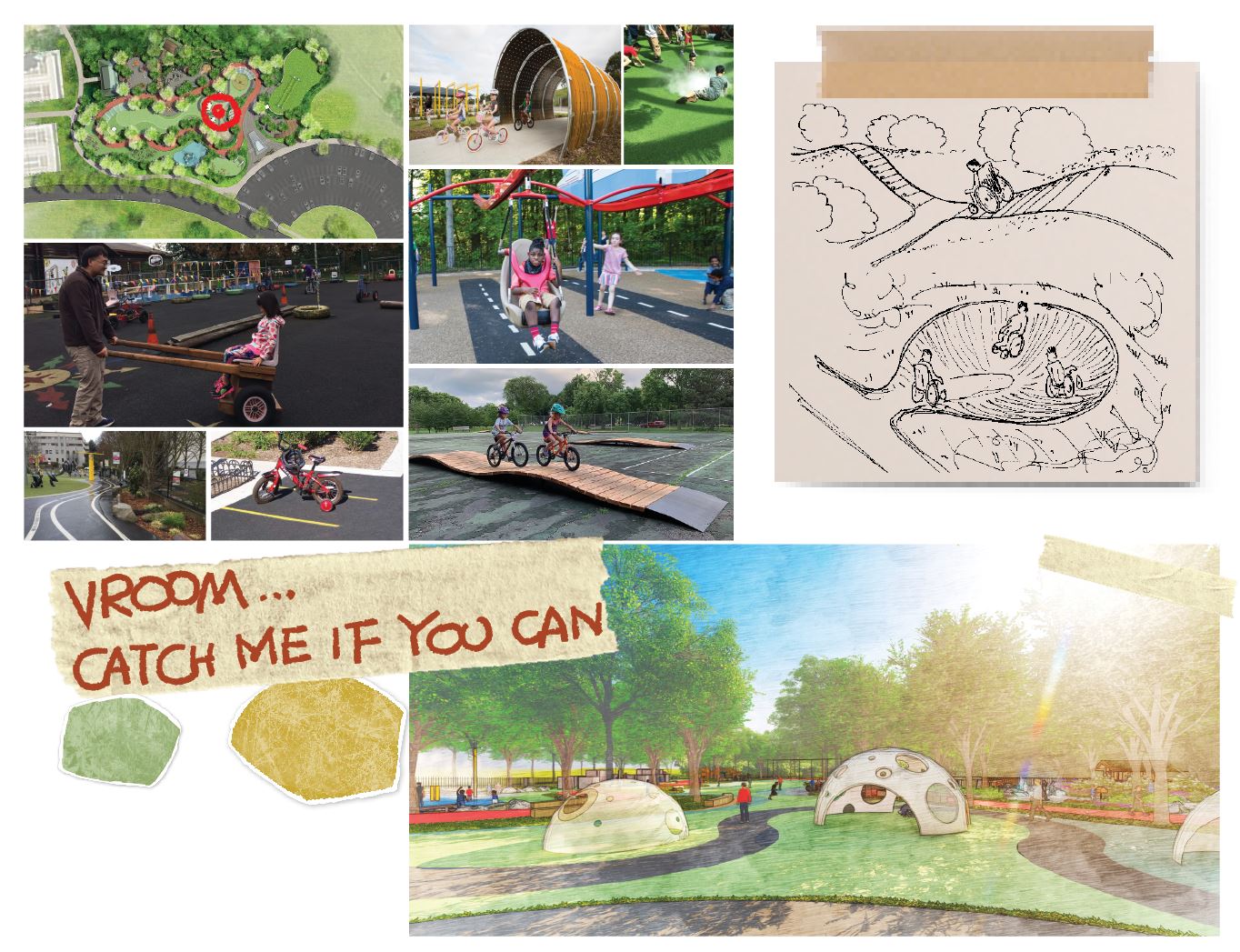
SOCIAL ENGAGEMENT
The design encourages social engagement by introducing elements that requires two or more users to play together. It presents opportunities for joint attention, cooperative play, positive reinforcement, and encourages children with developmental delays or autism to ask for help, invite others, and build relationships and confidence.
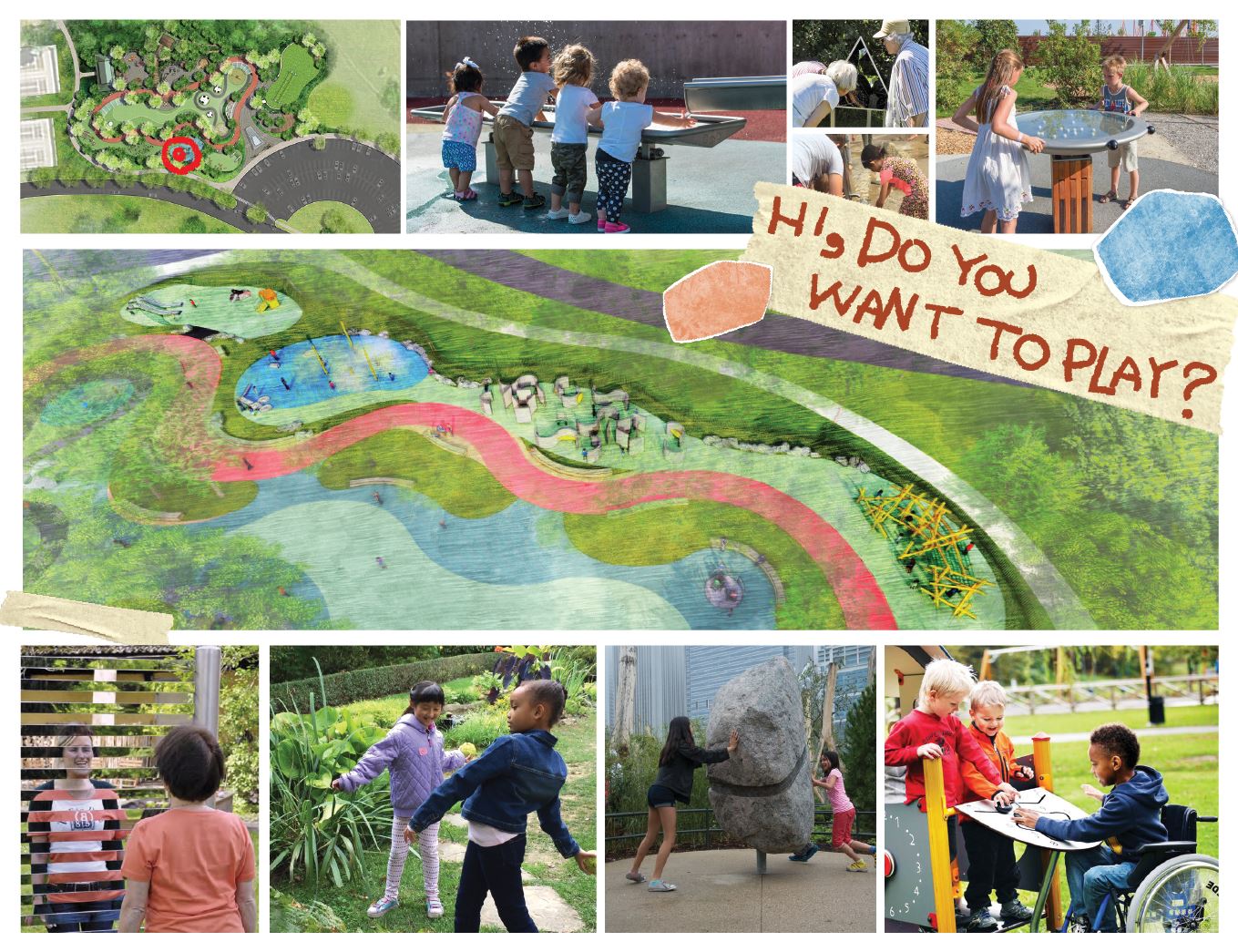
ELEVATED PERSPECTIVE
Children love to feel BIG. The Bennett’s Village tree house offers a unique ADA accessible opportunity to be ‘on top of the world’ and explore the playground from an elevated perspective. Multiple routes provide access from the tree house to the forest floor supporting a diversity of all abilities experiences.
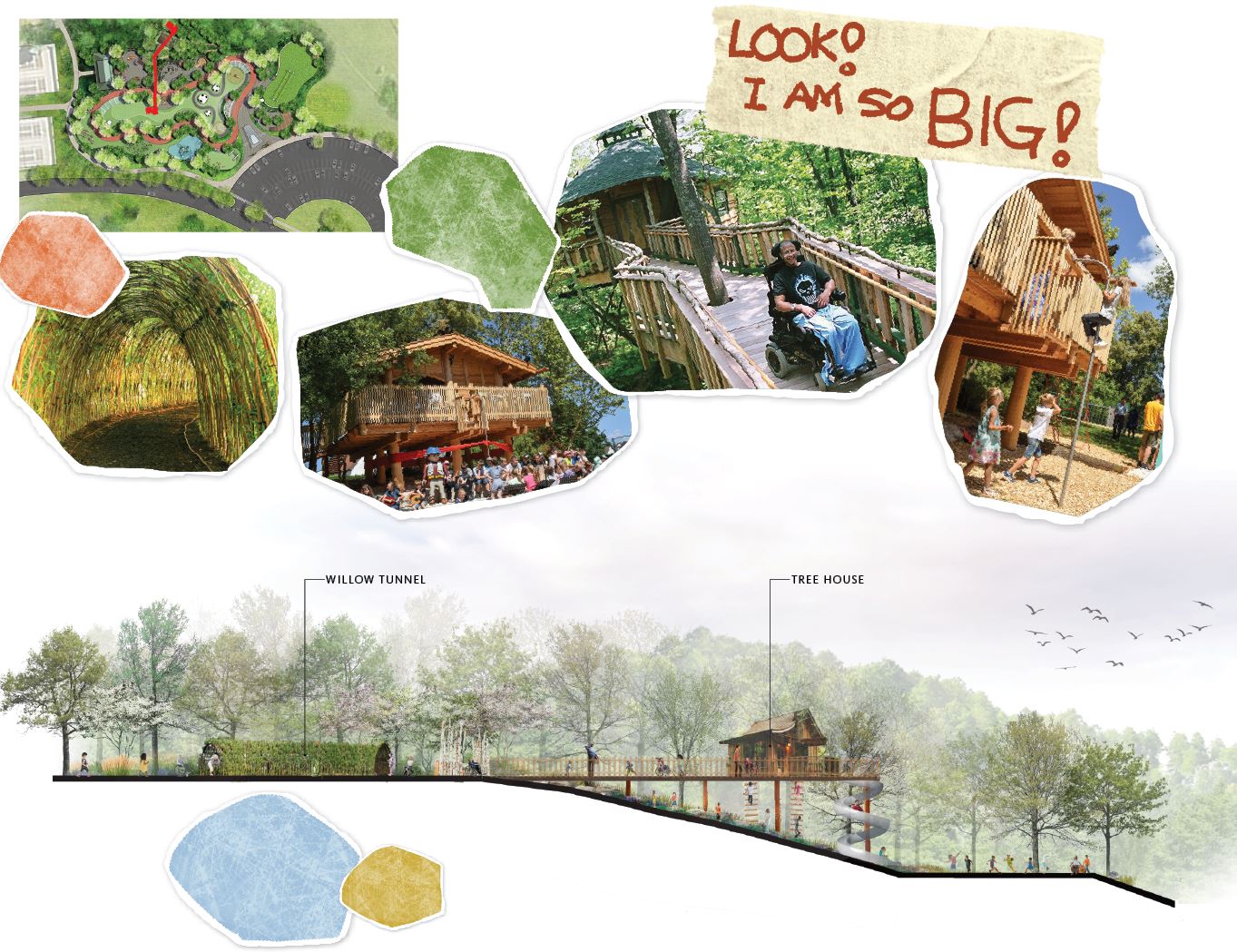
QUIET AREAS
Many children with special needs can feel overwhelmed in a busy playground. Quiet areas in Bennett’s Village are designed to help kids to cool down, collect themselves, and process what is going on – a critical component to a successful all-abilities playground.
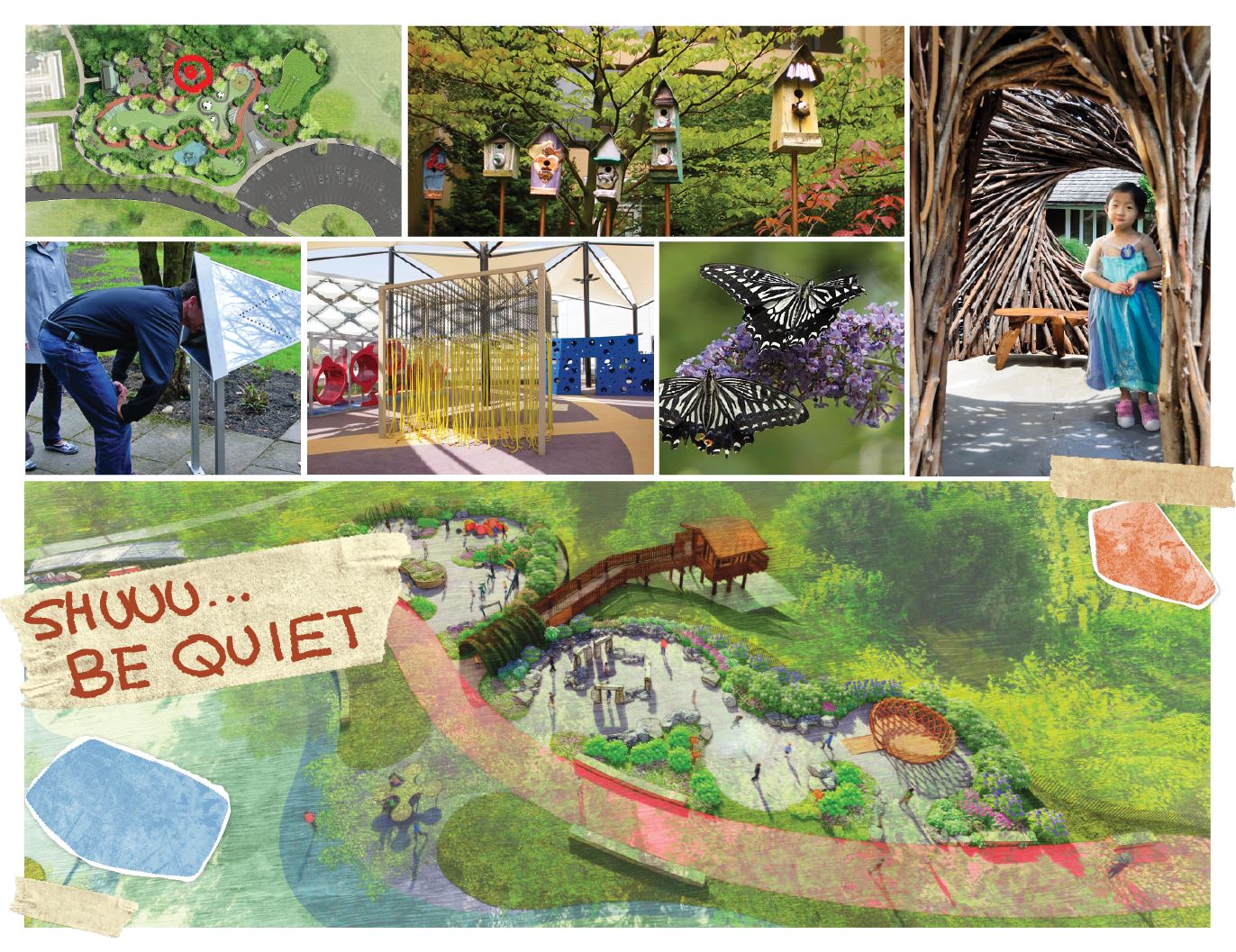
SENSORY INPUT
People with sensory deficits learn to adjust and calibrate these inputs in unique ways. The playground design offers an array of enriching, enhancing, and organizing sensory input through a combination of visual, auditory, olfactory, tactile, vestibular, and proprioceptive elements offering inclusive opportunities for all.
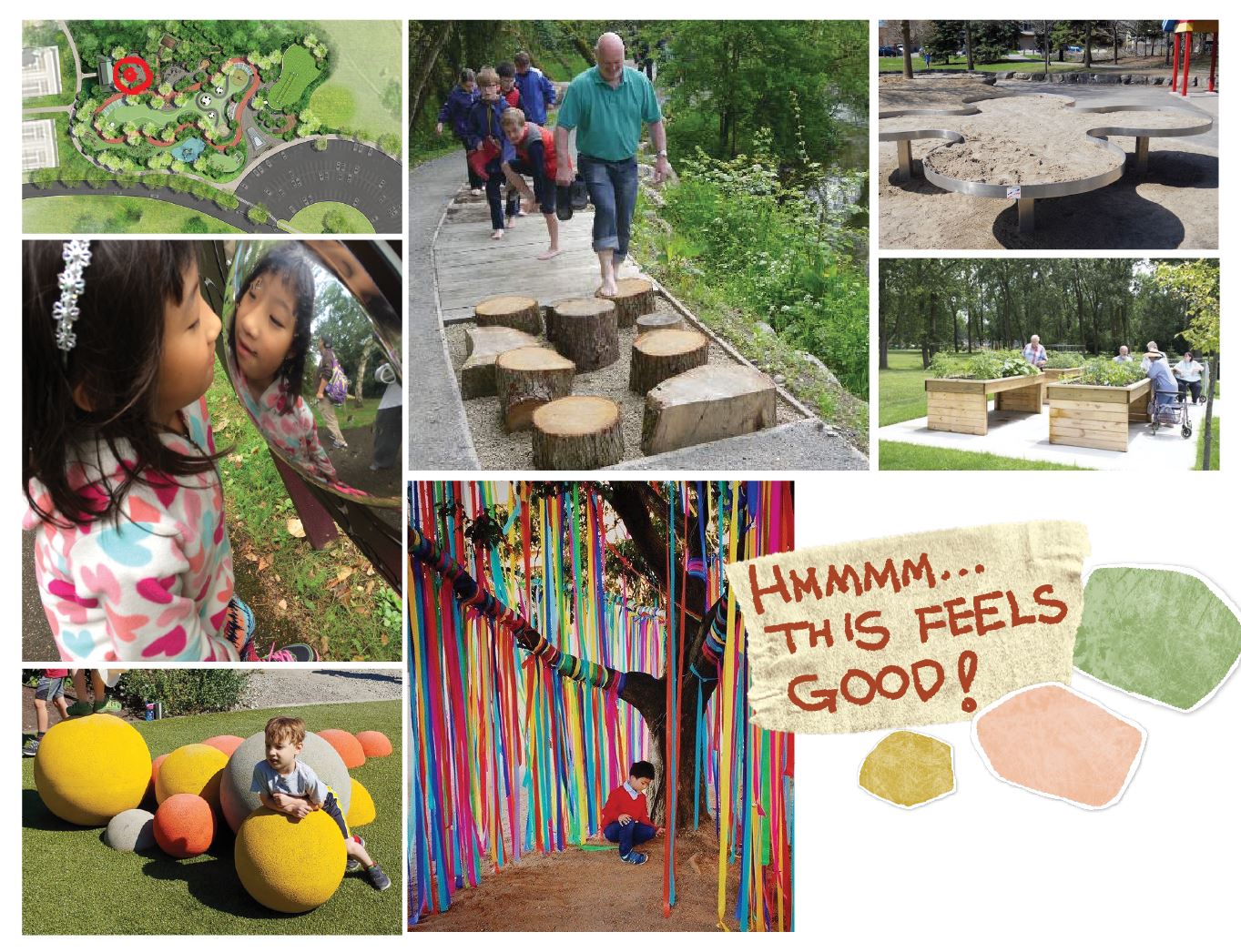
HORTICULTURAL THERAPY
The Bennett’s Village planting plan draws on extensive horticultural therapy research supporting a wide variety of sensory experiences, enhancing local wildlife, and affording opportunities for environmental education in a manner that is cost effective and aesthetically pleasing.

YEAR ROUND FUN
Bennett’s Village carefully calibrated design, wide range of feature elements, and flexible programming spaces creates an environment intended to engage visitors throughout the seasons – establishing a refreshing, welcoming, and inclusive community space for all year round.
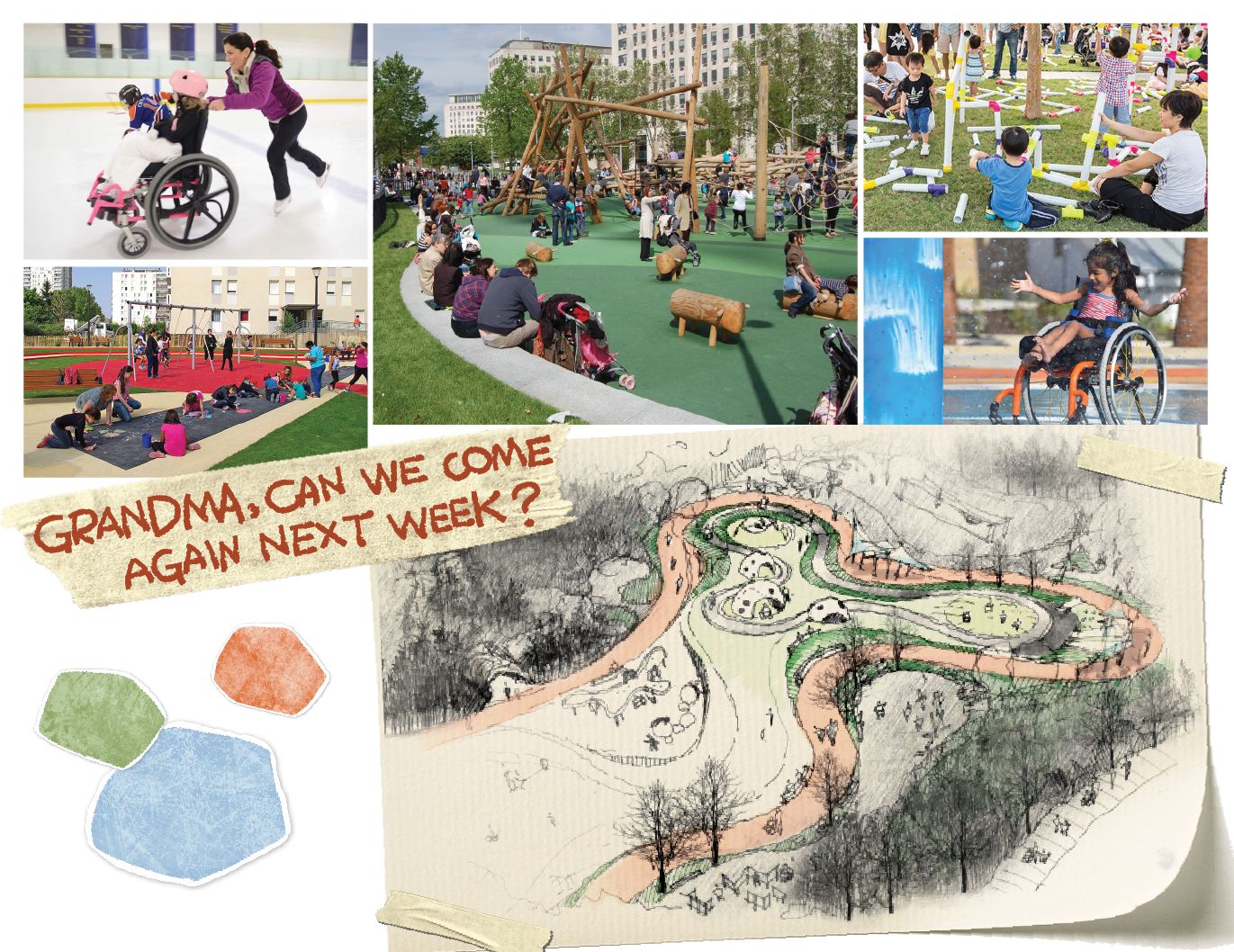
FUNDRAISING |The design team supported the client group to explore a range of fundraising and COVID-safe community engagement activities to advance the project. This includes a phased implementation strategy, a DIY project booklet for at home engagement, and naming opportunities in the park.
